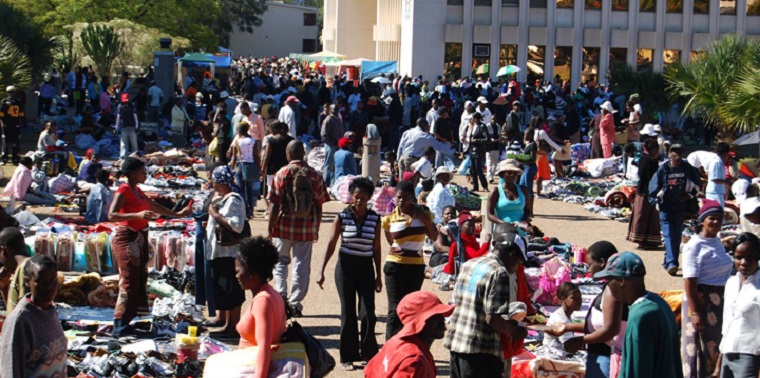While some people might have had bad experiences in the mining business, the sector remains one of the most lucrative business with great rewards when done properly. Mining comes with a number of risks which one has to find ways to overcome and excel in business. Zimbabwe’s mining sector has been highly populated with artisinal miners as more people are diving into the sector. Small to medium gold mining has been on the rise and below are pointers to help you understand the business and set up a successful venture.
Exploration

This is the initial and most important phase in mining. On this stage, you will be searching for areas with the desired mineral deposits. This stage also gives you the characteristics of the mineral deposit, estimates of mineral value, size of the ore body and the depth of the mineral. Having the above mentioned estimates allows the miner to ascertain if the venture is going to be profitable or not. This also points out the specific space to be mined. Not doing proper exploration definitely results in unprofitability of the venture.
Throughout the exploration process, there are questions that can assist in finding the right claim to mine like; can we find the desired mineral? Would there be enough ore to explore the claim further? Is the ore capable of bringing returns on the investment?
If the answers to the above questions is yes, then you are good to go.
Some exploration methods used by ASM are:
- Literature review
This should be the first thing to consider before any exploration activities. The Geological Survey Department can assist with documents that can deepen your understanding for a particular area, these may include geological bulletins and geological maps.
- Exploration Geochemical
Geochemistry is now used in virtually every exploration program. Exploration geochemistry has evolved from its early origins in assaying, to using the chemistry of the environment surrounding a deposit in order to locate it. This particularly applies to the use of surficial material, such as soil, till, or vegetation, that can be used in areas where there is little outcrop. (Charles J. Moon). Soil Sampling is one of the most used method in Zimbabwe, samples are collected and chemical analysis is done. This stage gives an idea of the aerial extent of the ore body.
- Geophysical Methods
After completing geochemical surveys, geophysical methods follows. The most practiced methods in Zimbabwe are:
Magnetic Survey
Magnetic surveys are the quickest, and often the cheapest, form of geophysics that can provide useful exploration information. A few minerals, of which magnetite is by far the most common, produce easily detectable anomalies in the Earth’s magnetic field because the rocks containing them become magnetized.
Induced polarization (IP)
This being a geophysical imaging technique used to identify the electrical chargeability of subsurface materials such as ore (mineral containing rock). IP is usually done as a follow up of magnetic surveys, it determine depth, and direction of the gold reef/belt.
Pitting and trenching:
Based on results of the above mentioned exploration methods, pitting or trenching can be done. Trenching is systematically carried out across the strike of the near-surface ore body. Sampling is carried out in the pits and trenches, samples can be taken for fire assay and some metallurgical test works.
Feasibility
Remember, mining is a business and feasibility studies have to be carried out so as to guarantee the profitability of the project. Exploration methods should at least give an estimate of ore reserve and grade. In gold mining, grade is expressed in grams (gold)/ton (ore). Samples collected from pitting and trenching should be put to metallurgical test works that can assist in ascertaining possible recovery (gold that can be extracted from the rock), cost of processing or reagents consumption rate, this should be compared to estimated revenue from gold sales. The hardness of the rock, nature of the ground and how much water to expect underground should also be put into consideration. Having an idea on the 5 year projected value of your targeted mineral can also assist in determine if you are going to stay in business for long. If the cost associated with producing a gram of gold surpasses the gold price per gram, and leaves a space for profits then you have found a good project for yourself.
Planning and Design
On this stage, decisions have to be made on the preferred mining and mineral processing methods. A budget and fundraising methods should be planned. Due to issues related to collateral security, accessibility of loans from bank has been a hustle, however there are banks that may be ready to assist in procurement of machines for example NMB Bank, Empower Bank, FBC Bank only to mention a few, alternatively finding individual investor or crowd funding would work. As the mining plan is crafted, it’s wise to make considerations of the environment and the community you are to invest in. After planning, construction or bringing on of machinery can start, safety considerations would also have to be made. Throughout the planning phase, there is also need to consult with the experts.
Operations
After the construction phase, ore mining can be initiated. Most small scale miners go for the pick and shovel technic whilst some bring in excavators on site. Cost and the nature of ground can influence decision making of the mining technique (open cast or underground mining). Safety precautions should be put in place when mining your ore.
Ore processing machinery is usually expensive to procure, however starting small and reinvesting may take you somewhere. You can start by having your ore processed at nearby processing stations, reinvest profits then develop a gravity concentration plant where you can recover free gold and sell the concentrates. Proceeds may be reinvested in a small acacia plant for intensive cyanidation and electrowinning. The product from electrowinning can then be smelted and bring you a bullion (gold bar).
Alternatively to intensive cyanidation, heap leaching can be applied. The model of reinvesting profits can lead to installment of a small processing plant, with a milling section, carbon in pulp and elution section with electrowinning cells. The product from cells can now be smelted to produce bullion.
Your operations should however be in strong accordance to the environmental regulations and other laws associated with mining.
Decommissioning and closure
Unfortunately mining doesn’t last forever, closure may be due to ore depletion, sudden drop in commodity price or rise in operational costs, unexpected decrease in grade or ore body, adverse geotechnical conditions, environmental breaches, policy change, social or community pressure among other reasons. The Mine should be left in a state that is not hazardous to wild life and the community. Some mines can also be turned into tourism destination after closure.
Further reference:
- Training Handbook for Artisanal and Small-Scale Miners in Zimbabwe MARCH 2019
- Introduction to mineral exploration, 2nd Edition, Charles J. Moon, Michael K.G. Whateley & Anthony M. Evans
- The Chemistry of Gold Extraction, 2006 John O. Marsden and C. lain House







